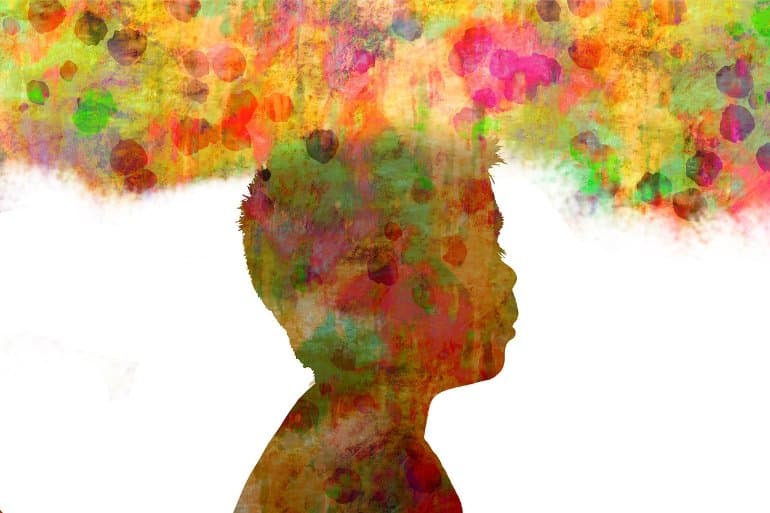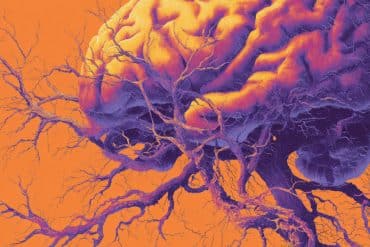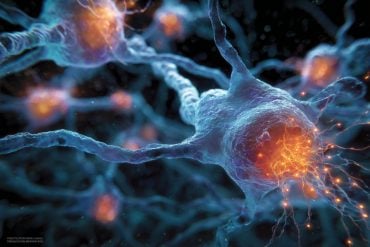Summary: Children whose parents use “harsh” punishments, such as spanking, have smaller brain structures during adolescence. The decreased size was most noticeable in the amygdala and prefrontal cortex, two areas of the brain associated with emotional processing and the emergence of depression.
Source: University of Montreal
Repeatedly getting angry, hitting, shaking or yelling at children is linked with smaller brain structures in adolescence, according to a new study published in Development and Psychology.
It was conducted by Sabrina Suffren, PhD, at Université de Montréal and the CHU Sainte Justine Research Centre in partnership with researchers from Stanford University.
The harsh parenting practices covered by the study are common and even considered socially acceptable by most people in Canada and around the world.
“The implications go beyond changes in the brain. I think what’s important is for parents and society to understand that the frequent use of harsh parenting practices can harm a child’s development,” said Suffren, the study’s lead author. “We’re talking about their social and emotional development, as well as their brain development.”
Emotions and brain anatomy
Serious child abuse (such as sexual, physical and emotional abuse), neglect and even institutionalization have been linked to anxiety and depression later in life.
Previous studies have already shown that children who have experienced severe abuse have smaller prefrontal cortexes and amygdala, two structures that play a key role in emotional regulation and the emergence of anxiety and depression.
In this study, researchers observed that the same brain regions were smaller in adolescents who had repeatedly been subjected to harsh parenting practices in childhood, even though the children did not experience more serious acts of abuse.
“These findings are both significant and new. It’s the first time that harsh parenting practices that fall short of serious abuse have been linked to decreased brain structure size, similar to what we see in victims of serious acts of abuse,” said Suffren, who completed the work as part of her doctoral thesis at UdeM’s Department of Psychology, under the supervision of Professors Françoise Maheu and Franco Lepore.
She added that a study published in 2019 “showed that harsh parenting practices could cause changes in brain function among children, but now we know that they also affect the very structure of children’s brains.”
Children monitored since birth at CHU Sainte-Justine
One of this study’s strengths is that it used data from children who had been monitored since birth at CHU Saint-Justine in the early 2000s by Université de Montréal’s Research Unit on Children’s Psychosocial Maladjustment (GRIP) and the Quebec Statistical Institute. The monitoring was organized and carried out by GRIP members Dr. Jean Séguin, Dr. Michel Boivin and Dr. Richard Tremblay.

As part of this monitoring, parenting practices and child anxiety levels were evaluated annually while the children were between the ages of 2 and 9. This data was then used to divide the children into groups based on their exposure (low or high) to persistently harsh parenting practices.
“Keep in mind that these children were constantly subjected to harsh parenting practices between the ages of 2 and 9. This means that differences in their brains are linked to repetitive exposure to harsh parenting practices during childhood,” said Suffren who worked with her colleagues to assess the children’s anxiety levels and perform anatomical MRIs on them between the ages of 12 and 16.
This study is the first to try to identify the links between harsh parenting practices, children’s anxiety and the anatomy of their brains.
About the study
“Prefrontal cortex and amygdala anatomy in youth with persistent levels of harsh parenting practices and subclinical anxiety symptoms over time during childhood,” by Sabrina Suffren et al, was published by Development and Psychology on March 22,
Funding: This study was funded by the Canadian Institutes of Health Research, the Quebec Ministry of Health and Social Services, the Fonds de recherche du Québec Société et culture, Canada’s Social Sciences and Humanities Research Council, the CHU Sainte-Justine Research Centre, the Foundation of Stars, and Université de Montréal and Université Laval.
About this brain development research news
Source: University of Montreal
Contact: Julie Gazaille – University of Montreal
Image: The image is in the public domain
Original Research: Closed access.
“Prefrontal cortex and amygdala anatomy in youth with persistent levels of harsh parenting practices and subclinical anxiety symptoms over time during childhood” by Sabrina Suffren et al. Development and Psychopathology
Abstract
Prefrontal cortex and amygdala anatomy in youth with persistent levels of harsh parenting practices and subclinical anxiety symptoms over time during childhood
Childhood adversity and anxiety have been associated with increased risk for internalizing disorders later in life and with a range of brain structural abnormalities. However, few studies have examined the link between harsh parenting practices and brain anatomy, outside of severe maltreatment or psychopathology. Moreover, to our knowledge, there has been no research on parenting and subclinical anxiety symptoms which remain persistent over time during childhood (i.e., between 2.5 and 9 years old).
Here, we examined data in 94 youth, divided into four cells based on their levels of coercive parenting (high / low) and of anxiety (high / low) between 2.5 and 9 years old. Anatomical images were analyzed using voxel-based morphometry (VBM) and FreeSurfer.
Smaller gray matter volumes in the prefrontal cortex regions and in the amygdala were observed in youth with high versus low levels of harsh parenting over time. In addition, we observed significant interaction effects between parenting practices and subclinical anxiety symptoms in rostral anterior cingulate cortical thickness and in amygdala volume.
These youth should be followed further in time to identify which youth will or will not go on to develop an anxiety disorder, and to understand factors associated with the development of sustained anxiety psychopathology.







